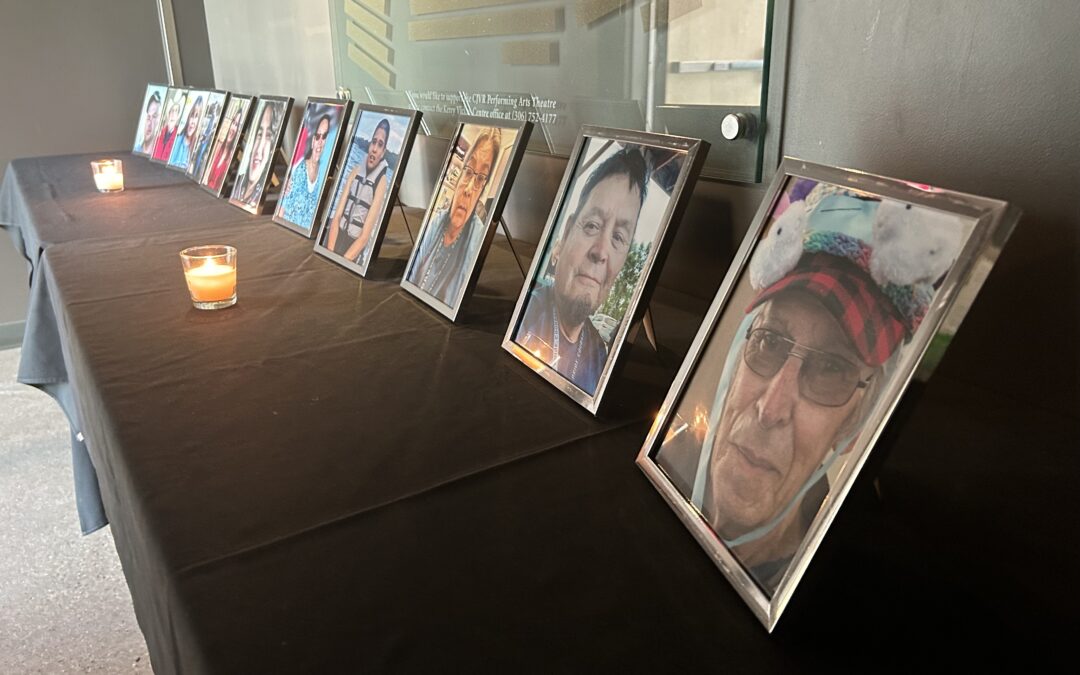WARNING: Distressing content
The Coroner’s Inquest looking at the mass stabbing on James Smith Cree Nation and in the Village of Weldon entered its ninth day Thursday.
The first witness to take the witness stand Thursday morning was Dr. Derek Musgrove a forensic pathologist with the Saskatchewan Coroner’s Service. Musgrove performed autopsies on six of the 11 victims of the mass stabbing including Damien Sanderson.
“Mr. Sanderson had multiple stab wounds, a total of five,” said Musgrove.
Many of the victims examined by Musgrove could have their cause of death traced back to a specific injury. For a number of victims the fatal wounds were to their necks. In the case of Damien this was not the case as it was found his death was a result of a number of injuries.
“Mr Sanderson died of multiple stab wounds,” said Musgrove.
Another observation which the forensic pathologist noted during his examination was that Damien’s body had signs of decomposition. Specifically he noted there were insect eggs on the body and also noticed discolouration. Musgrove testified dealing with a body in this condition is not out of the ordinary.
“We deal with that on a regular basis,” he said.
After Musgrove and Coroner’s Council Tim Hawryluk had finished going over the autopsy reports for all six victims, Hawryluk posed some questions on behalf of some of the families. One of those questions asked about if the victims could have been saved from succumbing to their injuries. Musgrove explained many of the victims had very serious injuries that would have required major medical interventions almost right away to be saved.
Due to the nature of the testimony, which described in detail the fatal injuries sustained by the victims, Coroner’s Council Hawryluk suggested that breaks in proceedings be done regularly to allow the jury as well as families in attendance to decompress. Coroner Blaine Beaven agreed and granted regular adjournments.
Early into Musgrove’s testimony one of the lawyers representing James Smith appeared to faint while sitting in her chair. There was a brief disruption as she was assisted by her colleague along with Deputy Sheriffs and RCMP, who helped her leave the hearing room.
Psychiatrist talks trauma
The second witness heard from Thursday was Dr. Jeffrey Waldman a psychiatrist who works on contract with the Correctional Service of Canada (CSC). He testified via video in the afternoon from Winnipeg. Waldman saw Myles Sanderson on at least one occasion.
During his testimony Waldman testified he noted Myles record was consistent with someone who had a personality disorder. Waldman said Sanderson as well had symptoms consistent with someone who had attention deficit hyper active disorder (ADHA).
When asked what changes need to be made in order to avoid future tragedies, Waldman said he would like to see more done to support offenders from a mental health perspective when they are released. Waldman testified offenders like Sanderson need support to deal with traumas which happened to them in childhood, like being abused by their parents.
“It’s not their fault those things happened to them,” he said.
Waldeman said he would also like to see more work done in the correctional system to prioritize drug programming for those most in need, specifically identifying those who are likely to fall back into a serious addiction upon release. He added Sanderson is not a unique case in the prison system.
“There’s so many guys like this,” he said.
Psychologist explains evaluations
The third witness heard from Thursday was David McGale a psychologist who put together a number of reports which looked at Sanderson’s history and his risk to reoffend. The results varied with some indicating a medium to high risk to reoffend, this could have included a breach of release conditions. Another assessment showed Sanderson as being a high risk to reoffend violently. When it came to reducing Sanderson risk of reoffending, McGale said it was important for him to avoid drug use, stay connected with his culture and maintain employment.
When he talked to Sanderson McGale said Sanderson didn’t blame other people for his crimes and took responsibility. While being interviewed by McGale Sanderson became emotional when he talked about barging into his home while he was high on drugs and how his children had to be locked in the bathroom for their own protection.
“He started getting choked up,” said McGale.
He said Sanderson was doing good work in prison connecting with his Indigenous roots. McGale explained he felt Sanderson could have benefited from some form of one on one counselling.
“I still felt there was some unresolved childhood issues of abuse,” he said.
The possible use of detention, the process when an offender is denied release despite serving two thirds of their sentence, was brought up. McGale testified when looking at Sanderson’s record there was nothing that would have led to him making a recommendation for it.
“Not based on the information that I had,” he said.
Talking Stick is a Saskatchewan-based free anonymous chat platform that connects people seeking emotional support to a trained Indigenous peer advocate 24/7. https://my.talkingstick.app/
